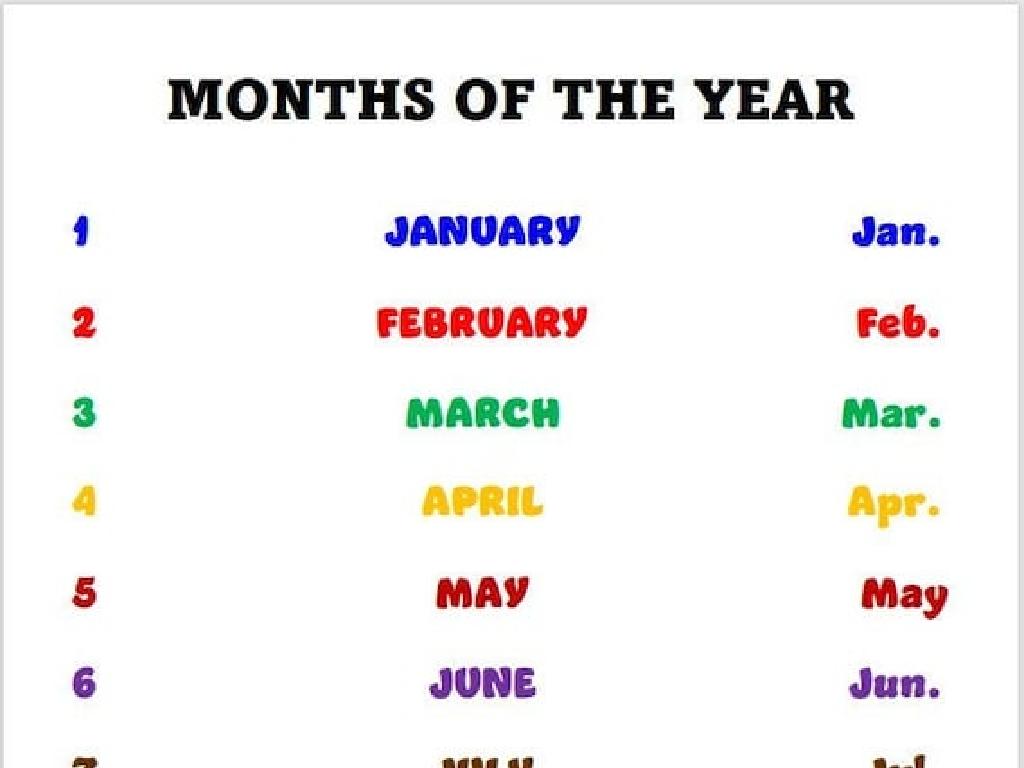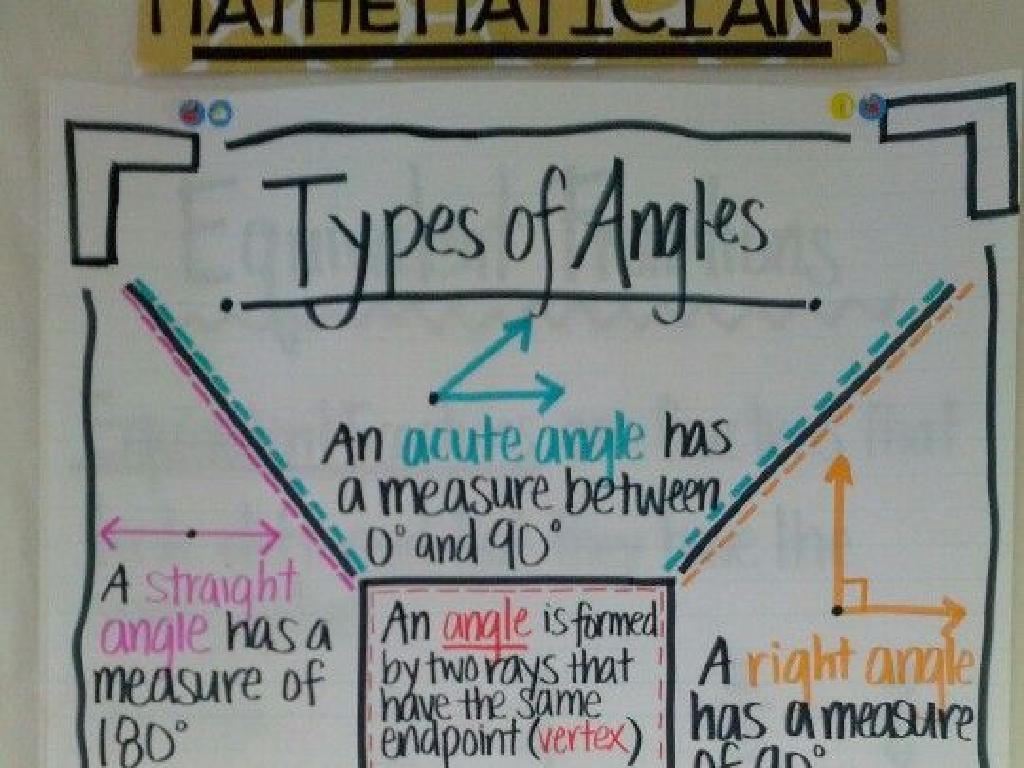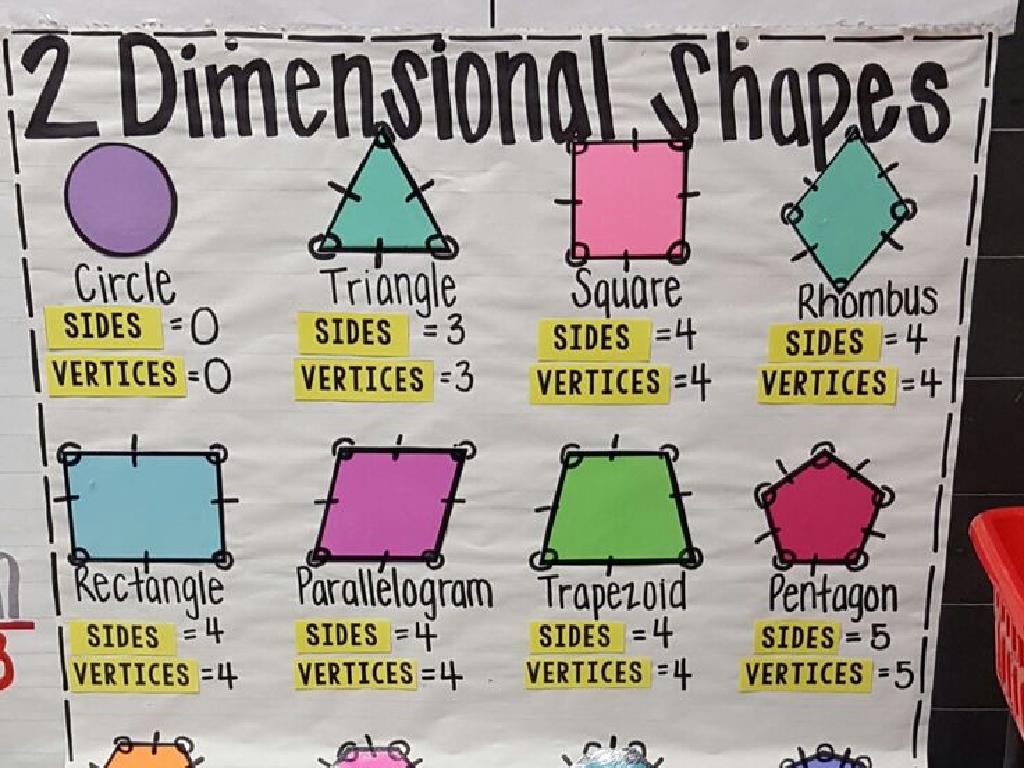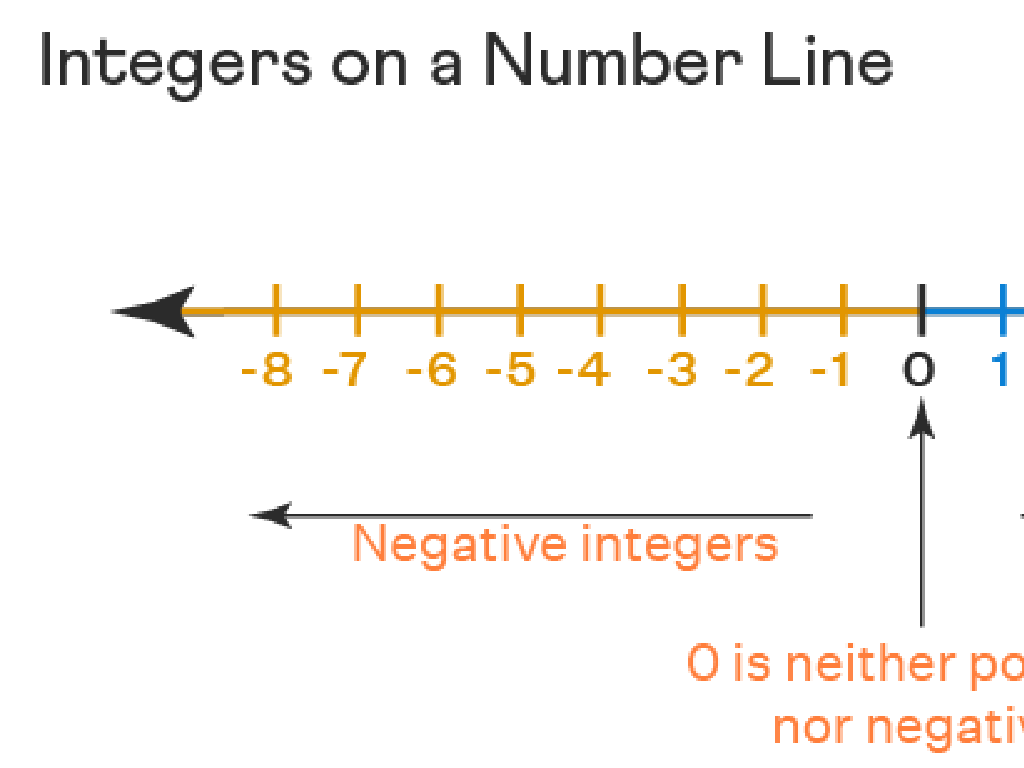Which Two Words Have The Same Ending?
Subject: Language arts
Grade: First grade
Topic: Rhyming
Please LOG IN to download the presentation. Access is available to registered users only.
View More Content
Welcome to Rhyming Words!
– Greetings First Graders!
– Today’s topic: Rhyming words
– Rhyming words end in the same sounds
– Words like ‘bee’ and ‘tree’ rhyme because they have the same ending sound.
– Examples: ‘cat’ and ‘hat’
– More examples: ‘dog’ and ‘frog’, ‘sun’ and ‘fun’
|
This slide introduces first graders to the concept of rhyming words, which is a key component of phonological awareness and an important skill in learning to read. Start the lesson by greeting the students warmly to create an engaging learning environment. Explain that rhyming words are words that have the same ending sound, which makes them sound similar. Provide clear examples using simple words that the students are likely to know. Encourage the students to listen to the sounds at the end of the words to identify rhymes. You can make this interactive by saying a word out loud and asking the students to come up with a word that rhymes with it. This will help them understand the concept of rhyming in a fun and engaging way.
What is Rhyming?
– Rhyming words sound the same at the end
– They often have similar ending letters
– Example: ‘cat’ and ‘hat’
– ‘cat’ and ‘hat’ both end with ‘at’
– Rhymes make reading fun!
– Rhymes can help us remember words
|
This slide introduces the concept of rhyming to first graders. Rhyming is when words have the same last sound, which often means they end in the same letters. Use simple, familiar examples like ‘cat’ and ‘hat’ to illustrate this concept. Emphasize that rhyming words are not just fun to say, but they also make reading and learning more enjoyable. Encourage the students to listen for rhymes in songs, poems, and stories. Activities can include identifying rhyming words in a read-aloud or creating a rhyming word wall in the classroom.
Listening to Rhymes
– Listen to words I say
– Do these two words rhyme?
– Rhymes have same ending sound
– Cat and hat rhyme because they both end with ‘at’
– Practice makes perfect!
– We’ll try with different words to get better at listening for rhymes
|
This slide is designed to engage first graders in a listening activity to identify rhyming words. Start by explaining that rhyming words have the same ending sounds. Give examples of rhyming words like ‘cat’ and ‘hat’. Then, say pairs of words out loud and ask the students to listen carefully and determine if the words rhyme. Encourage participation by having students raise their hands if they think the words rhyme. Provide immediate feedback and reinforcement. As an extension, you can have students come up with their own rhyming words. This activity helps develop phonemic awareness, an essential skill in reading development.
Matching Rhyming Words
– Let’s find words that sound the same
– Observe the pictures and words
– Look carefully at what each picture shows
– Match two words that rhyme
– Words that end with the same sound are rhymes
– Share your rhyming pairs
– Tell us which words you think are rhymes
|
This slide is designed to engage first-grade students in a rhyming activity that helps them understand the concept of rhyming words. Start by explaining that rhyming words have the same ending sound. Show pictures and words on the screen or on flashcards. Encourage the students to look at the pictures and the words provided to find pairs that rhyme. For example, ‘cat’ and ‘hat’ or ‘dog’ and ‘frog’. After they have matched the words, ask them to share their rhyming pairs with the class. This activity will help reinforce their phonemic awareness and understanding of rhymes. Provide guidance and positive reinforcement as they make their matches.
Finding Rhymes in Poems
– Poems often have rhyming words
– Words at the end of lines that sound the same
– We’ll read a poem together
– Listen for rhyming words
– Words like ‘cat’ and ‘hat’ or ‘star’ and ‘car’
– Raise your hand when you hear a rhyme
|
This slide is designed to introduce first graders to the concept of rhyming within poems. Explain that poems often use rhyming words to create a rhythm or pattern. Read a short, age-appropriate poem aloud to the class, and encourage active listening by asking students to raise their hand when they hear words that rhyme. This interactive approach will help students recognize rhyming patterns and enhance their phonological awareness. After reading, discuss the rhyming words they identified and explain how they contribute to the poem’s structure. Prepare to offer guidance and praise as they make their first attempts at recognizing rhymes.
Creating Our Rhymes
– Time to make your own rhymes
– Think of one word first
– Any word like ‘cat’, ‘sun’, or ‘ball’
– Find a rhyming partner word
– What sounds like ‘cat’? Maybe ‘hat’!
– Share your rhymes with the class
– Tell us your pair and why they rhyme
|
This slide is meant to encourage active participation from the students in creating rhymes. Start by explaining that rhyming words have the same ending sounds. Provide examples if necessary. Then, instruct the students to think of any word they like and find another word that ends with the same sound. Once they have their rhyming pair, they should be prepared to share with the class. For the teacher: Have a list of simple words that rhyme ready to prompt students if they get stuck. Encourage them to explain why the words rhyme to reinforce the concept of rhyming sounds.
Rhyming Word Game
– Let’s start our rhyming game
– Listen to my word carefully
– Find a friend with a rhyming word
– Words that sound the same at the end, like ‘cat’ and ‘hat’
– Sit down with your rhyming partner
|
This interactive game is designed to help first graders recognize and form rhyming pairs. Start by explaining what rhyming words are: words that have the same ending sound. Give clear instructions on how the game will be played. Say a word out loud and have each student find a partner whose word rhymes with yours. Once they find their partner, they should sit down together. This activity not only reinforces the concept of rhyming but also encourages teamwork and listening skills. Possible words to use: ‘dog’ and ‘frog’, ‘tree’ and ‘bee’, ‘sun’ and ‘fun’. Make sure to walk around the classroom to assist and ensure that each student finds a rhyming partner.
Class Activity: Rhyme Time!
– Engage in ‘Rhyme Time’ activity
– Receive cards with words and images
– Each card will have a word and a matching picture
– Pair up with a classmate
– Take turns finding rhyming cards
– If ‘cat’ is picked, look for a card that ends with ‘at’ like ‘bat’
|
This activity is designed to help first graders recognize and understand rhyming words by associating them with pictures. Distribute cards evenly among the students. Ensure that each pair has a mix of cards that rhyme and don’t rhyme to encourage critical thinking. As students pick cards, they should say the words out loud to hear the rhyming sounds. For example, if one student picks a card with ‘dog’, they should look for a word that ends with ‘og’ like ‘frog’. Teachers should monitor the pairs and assist if they struggle to find rhymes. Possible variations of the activity could include rhyming memory games, rhyming bingo, or creating a rhyming story with the chosen cards.
Rhyming Mastery: Great Job!
– Celebrate finding rhymes
– Rhyming words end the same
– Words like ‘cat’ and ‘hat’ sound alike at the end!
– Practice rhymes with books
– Look for rhyming pairs as you read stories
– Sing and find rhymes in songs
– Listen for rhymes in your favorite tunes
|
This slide is a conclusion to reinforce the concept of rhyming words. Praise the students for their efforts in identifying rhyming words. Emphasize the key characteristic of rhyming words, which is that they have the same ending sound. Encourage students to continue practicing this skill at home by finding rhymes in their favorite books, songs, and poems. This will help them develop a keen ear for rhyming patterns and enhance their phonological awareness. You can suggest parents to read rhyming stories at bedtime or have fun singing nursery rhymes together.






